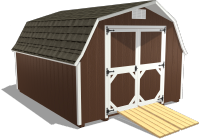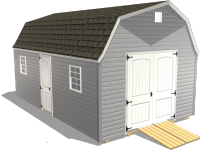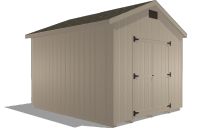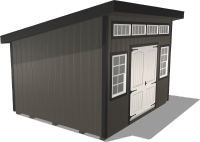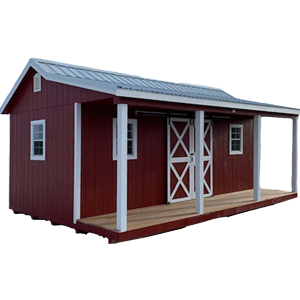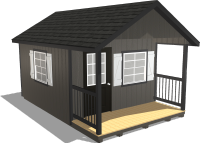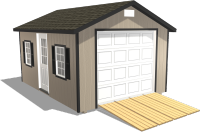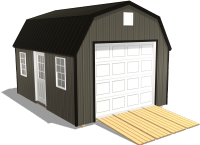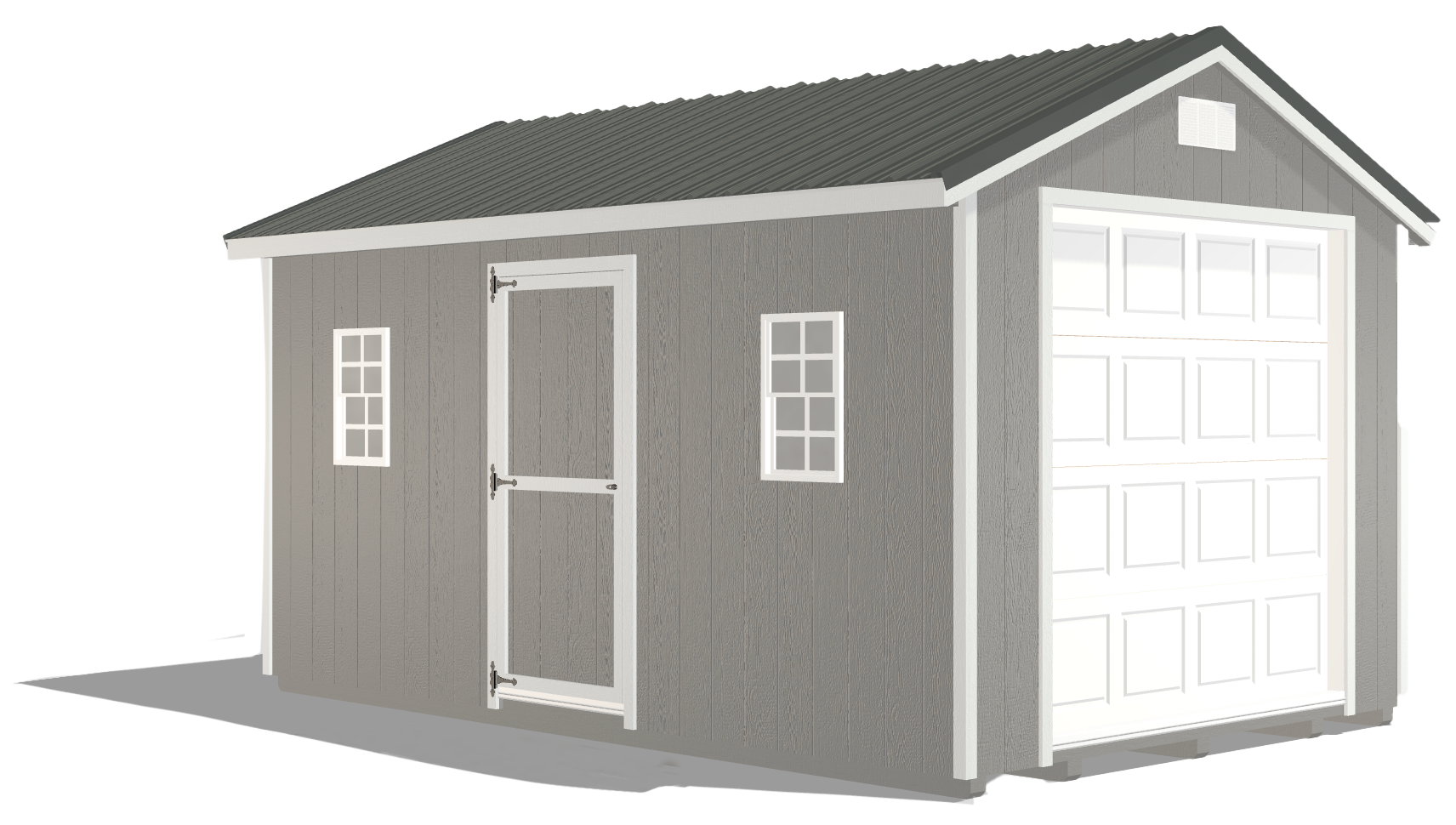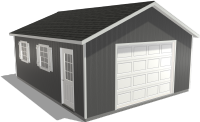Master Plant Growth: Greenhouse Heating & Cooling Strategies
by Dakota Storage Buildings, on July 22, 2024

When it comes to mastering plant growth within controlled environments like heated greenhouses, optimizing heating and cooling strategies is essential to greenhouse ventilation. Gardeners often face challenges like fluctuating external temperatures, seasonal variations, and specific plant requirements that demand precise climate control. Addressing these challenges is important for ensuring consistent and optimal conditions for plant growth and overall crop health. This blog explores the different technologies and techniques to help you maintain ideal greenhouse conditions year-round. By understanding and implementing these strategies in your greenhouse design, you can create a stable and nurturing environment that promotes healthy plant development and maximizes your harvest potential.
Essential Heating and Cooling Techniques for Healthy Plants
Achieving the perfect balance of heating and cooling within your greenhouse is essential for fostering a thriving plant environment. Proper temperature control ensures that plants grow healthy, reach their full potential, and produce high yields.
Stable Temperatures Promote Healthy Plant Development
Maintaining optimal temperatures in your greenhouse design is crucial for healthy plant growth. Temperature directly impacts various physiological processes in plants, including photosynthesis, respiration, and nutrient uptake. Temperatures outside the ideal range can lead to stress, reduced growth, and lower yields. Ensuring a stable temperature range is vital for promoting growth and maximizing productivity. By closely monitoring temperature levels and making necessary adjustments, you can prevent common issues related to temperature stress and support the overall well-being of your plants.
Top Heating and Cooling Methods
Effective temperature control involves a combination of greenhouse heating and cooling strategies.
Radiant Heating: These systems provide even heat distribution, creating a consistent temperature throughout the greenhouse. This method is particularly beneficial during colder months when maintaining consistent warmth is critical.
Evaporative Cooling: This technique helps lower temperatures during hot periods, preventing overheating and dehydration. Understanding and implementing these methods can significantly enhance your greenhouse's growing conditions.
By combining these strategies, you can maintain an optimal climate that caters to the specific needs of your plants, ensuring they thrive in any season.
Selecting the Right Heating System for Your Greenhouse

Heating systems are essential for maintaining warmth during cold seasons, ensuring that your plants continue to grow and develop even when outdoor temperatures drop. Different types of heating systems offer various benefits and efficiencies, making it important to choose the right one for your greenhouse. The choice of heating system can significantly impact your energy consumption, operational costs, and the overall health of your plants.
Types of Heated Greenhouse Systems
Gas Heaters: These are efficient and can quickly raise temperatures, making them ideal for larger greenhouses where maintaining a consistent temperature is crucial. They are particularly effective in regions with harsh winters and can be combined with thermostats for precise temperature control.
Electric Heaters: Suitable for smaller spaces, electric greenhouse heaters provide controlled heating but can be more expensive to run. They are easy to install and can be placed in multiple spaces in the greenhouse, making them a convenient option for hobbyists and small-scale growers.
Geothermal Heating: This sustainable option uses the earth's natural heat, offering consistent and energy-efficient heating. Geothermal systems are environmentally friendly and have lower operating costs over time. They are a great choice for growers committed to sustainable practices and looking to reduce their carbon footprint.
Tips to Maximize Heating Efficiency in Your Greenhouse
To maximize the efficiency of your heated greenhouse, monitor temperatures regularly and ensure your greenhouse is well-insulated. Use double-glazed panels to reduce heat loss and consider installing thermal screens to retain warmth during the night. Additionally, proper maintenance is crucial to ensure your greenhouse heating equipment is operating at peak efficiency. Regularly clean and inspect greenhouse heaters, check for any signs of wear or damage, and replace components as needed.
Utilize Cooling Strategies for a Healthy Growing Environment

Cooling is just as important as heating in maintaining an optimal growing environment. Proper ventilation and cooling techniques help prevent overheating and maintain humidity levels. Without adequate cooling, plants can suffer from heat stress, leading to wilting, poor growth, and reduced yields.
Effective Ventilation for a Comfortable Greenhouse
Ventilation plays a crucial role in greenhouse cooling by promoting air circulation. Ridge vents, side vents, and exhaust fans help remove excess heat and humidity, ensuring a balanced climate. Good ventilation not only cools the greenhouse but also brings in fresh air, which is essential for photosynthesis and respiration in plants. Proper air circulation helps prevent the buildup of pathogens and pests, reducing the risk of plant diseases. Ensuring that your greenhouse design has adequate ventilation is a fundamental step in maintaining a healthy growing environment.
Lower Tempatures With Evaporative Cooling Techniques
Evaporative cooling methods, such as misting systems and shade cloths, can effectively lower greenhouse temperatures. Misting systems increase humidity and reduce temperature through evaporation, which is particularly useful in dry climates. These systems can be automated to provide consistent cooling without manual intervention. Shade cloths block excess sunlight, preventing heat buildup inside the greenhouse. They come in various densities, allowing you to control the amount of light and heat that enters the space. Combining these evaporative cooling techniques can create a more stable and comfortable environment for your plants.
Balancing Heating and Cooling for Optimal Plant Growth

Achieving a balance between heating and cooling is essential for maintaining a stable growing environment. This equilibrium ensures that plants are not subjected to stress from extreme temperatures. By carefully managing the heating and cooling, you can create a consistent climate that supports optimal plant health throughout the year. Understanding how to balance these elements effectively is key to maximizing the efficiency and success of your greenhouse operations.
Using Thermal Mass for Temperature Control
Thermal mass refers to materials that absorb, store, and release heat. Incorporating elements like water barrels, stone flooring, or concrete walls in your greenhouse can help stabilize temperatures by retaining heat during the day and releasing it at night. These materials act as natural temperature buffers, reducing fluctuations and creating a more stable environment. Strategically using thermal mass can significantly enhance the energy efficiency of your greenhouse, lowering heating and cooling costs while maintaining a favorable climate for plant growth. Thermal mass can also reduce the impact of sudden temperature changes, protecting your plants from potential stress and damage.
Monitoring and Adjusting Temperatures
Continuously monitoring temperature and humidity levels is crucial for maintaining an optimal greenhouse environment. Use sensors and data loggers to collect real-time data on the temperature and humidity levels. This allows you to make informed adjustments as needed. Automated climate control systems can be integrated with these monitoring tools to regulate heating and cooling systems based on real-time data. This automation ensures that your greenhouse remains within the ideal range for different plant varieties, reducing the risk of temperature-related stress and improving overall plant health. Regularly reviewing and analyzing the data can also help you identify trends and make proactive adjustments to enhance your greenhouse's efficiency and productivity.
Troubleshooting Common Greenhouse Heating and Cooling Issues

Even with the best systems in place, you may encounter issues with temperature and humidity control. Identifying and addressing these problems promptly is crucial for maintaining plant health. Effective troubleshooting involves understanding the root causes of these issues and implementing solutions that prevent them from recurring.
Combat Sudden Temperature Changes
Sudden changes in temperature can stress plants and disrupt growth. To combat this, ensure your greenhouse design has adequate insulation and consider using backup heating or cooling systems to handle extreme conditions. Insulating materials such as bubble wrap or thermal screens can help maintain a consistent temperature by reducing heat loss and protecting against cold drafts. Setting up a backup system, like a secondary greenhouse heater or cooling unit, ensures that your plants remain protected during unexpected temperature drops or spikes.
Keep Humidity in Check for Plant Health
High humidity levels can lead to mold and mildew, while low humidity can cause plants to dry out. To maintain optimal levels, use hygrometers to monitor humidity and adjust ventilation or misting systems as needed. Proper ventilation is crucial for managing humidity. Ensure that vents and fans are working correctly and that air can circulate freely throughout the greenhouse. Incorporating dehumidifiers or humidity control systems can also help maintain the right balance, especially during periods of high moisture. Regularly check for signs of mold or mildew and address any issues immediately to prevent them from spreading and affecting plant health.
Invest in the Right Greenhouse for Ultimate Plant Health
Now that you have a comprehensive understanding of greenhouse heating and cooling strategies, you can create the perfect environment for your plants. By implementing these techniques, you will enhance plant growth, optimize resource utilization, and promote sustainable agricultural practices. Ready to start your journey in greenhouse gardening? Explore our range of stock greenhouses and take the first step towards transforming your gardening experience today. Investing in the right greenhouse design can provide you with a controlled environment that supports year-round cultivation and increases your overall gardening success.





